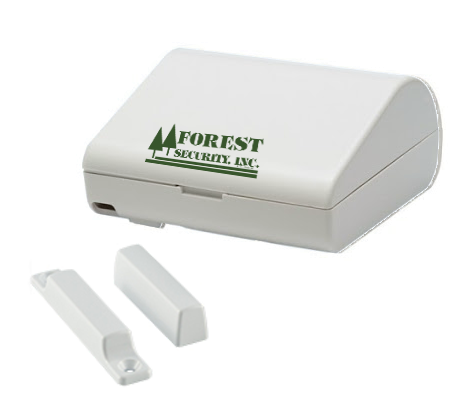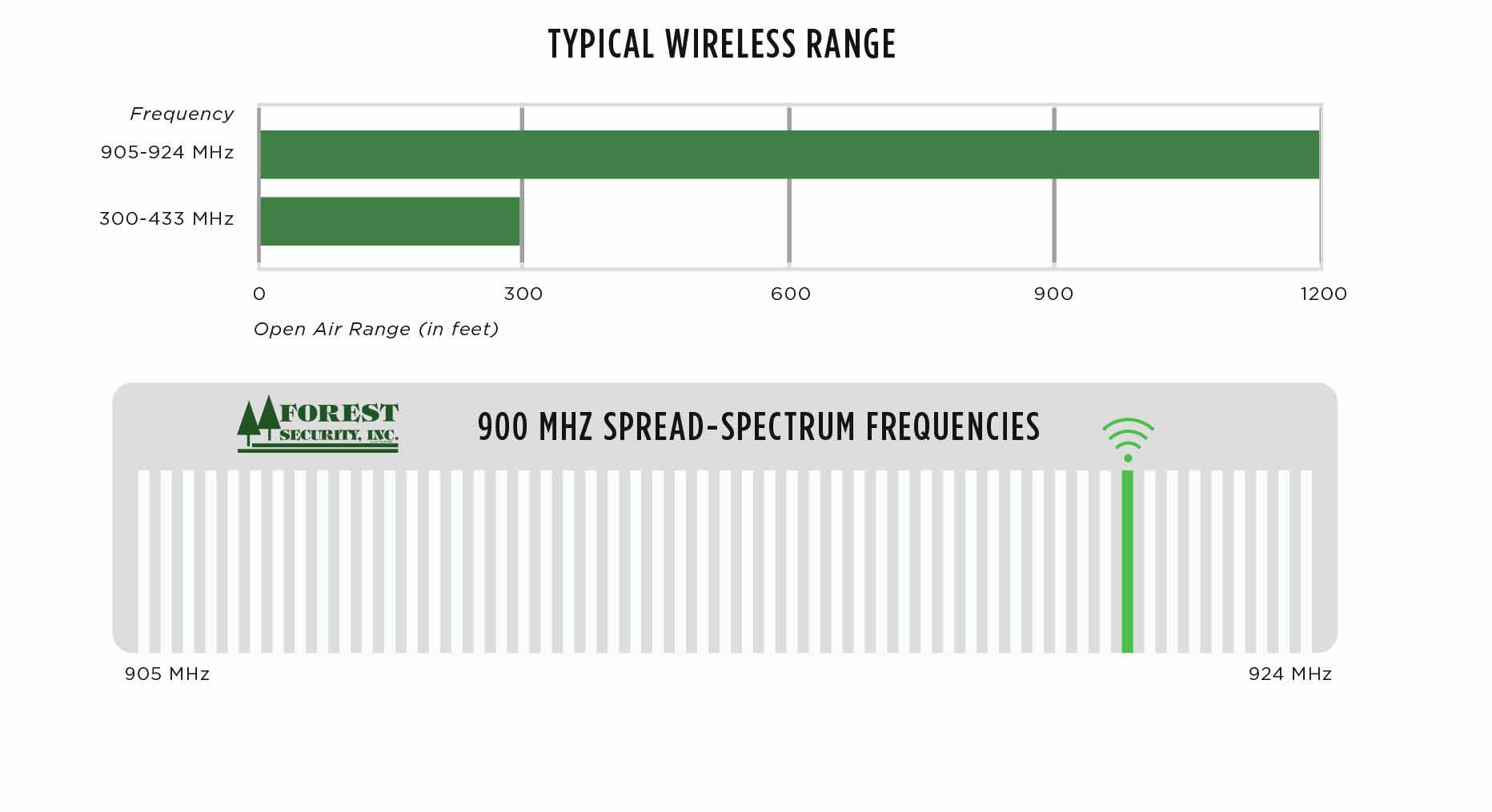
Your doors and windows are your home’s weakest points
To a burglar, an unsecured door or window is like a big “WELCOME” sign. That’s why contact sensors are some of the most popular home security devices.
Your Forest Security System will be designed to include a contact on every entry/exit door in your home. Accessible windows can also be protected with contacts or an interior motion detector can also be used to protect interior areas of your home.
Almost all door and window sensors use a “reed switch” to determine when a protected area has been breached. A reed switch consists of a set of electrical connectors placed slightly apart. When a magnetic field is placed parallel to the electrical connectors, it pulls them together, closing the circuit. When the magnet is moved away by opening the door or window, the circuit is interrupted and sends a signal to the control panel.
There is also an option to be alerted via email or SMS if a contacted door, window or other device (i.e. medicine cabinet, gun safe or anything else you want to secure) even when you alarm system is not armed.
Forest Two-Way Door Transmitters
Two Way transmitters offer greater security by operating in the 905-924 MHz spectrum band offer numerous advantages over other products:
- Longer range due to less strict regulatory requirements for the 905-924 MHz frequency band in comparison with the 300-433 MHz band
- Support for more frequent sensor check-ins, increasing system reliability
- Spread-spectrum technology for greater reliability and protection from jamming
- Two-way communications for greater reliability
- Greater range with support for up to eight repeaters⋅ Shorter wavelengths are less likely to be blocked by new walls or other changes made to a protected area⋅UL approved for commercial fire installations
- Longer battery life for lower maintenance costs

900 MHZ SPREAD-SPECTRUM TECHNOLOGY
Forest’s wireless communication employs 900 MHz frequency-hopping spread-spectrum to ensure clear and accurate signal transmissions without interference in practically any environment. The spread- spectrum technology enables the system to use numerous channels within the 905-925 MHz band and to dynamically hop from frequency to frequency.
By using spread-spectrum technology, this virtually ensures that our wireless system cannot be defeated by jamming. With non-spread-spectrum systems that operate in a narrow frequency band, an intruder can use a wireless device to flood the area with transmissions at the same frequency used by the alarm system, thereby preventing alarm signals from reaching the receiver.
Every 32 milliseconds, Forest’s Two-Way Wireless hops to a new frequency across 53 frequencies. The order is random and determined by the house code of the panel.Although spread-spectrum technology uses frequencies that other systems use, and it will see interference from other systems, it is designed to overcome that interference inherently.
This is one of the main advantages of spread-spectrum wireless.If the device and receiver hop to a different channel and encounter a channel that has interference, it simply moves on, and the data acknowledgment will not be received, thus requiring the panel or sensor to resend that signal. This trying and re-sending will automatically occur until the message is sent and acknowledged. This self-healing system is very reliable.

